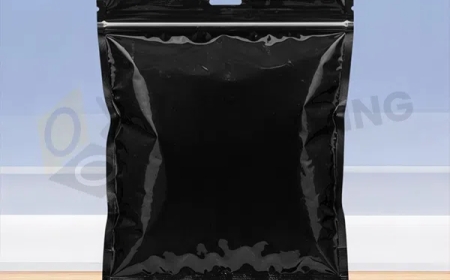Understanding Diazotization: Mechanisms, Reactions, and Practical Applications in Chemistry
Our experts can continuously improve your development programs by building a series of advanced platforms. We are committed to being a trusted brand that delivers on our vision and continually reinforces our values and beliefs throughout the pharmaceutical industry.
Introduction
Diazotization is a fundamental chemical process widely used in organic synthesis, dye manufacturing, and pharmaceutical production. This reaction involves converting primary aromatic amines into diazonium salts, which are highly reactive intermediates. Understanding the diazotization mechanism, the diazotization reaction, and the concept of diazotizing aromatic compounds is crucial for chemists and industrial applications. In this article, we will explore how diazonium salts are formed, their properties, and their significance in synthetic chemistry.
What is Diazotization?
Diazotization is the chemical process where a primary aromatic amine reacts with nitrous acid (HNO?) to form a diazonium salt (Ar-N?? X?). The termdiazotizedrefers to a compound that has undergone this transformation. These diazonium salts are unstable under certain conditions but serve as versatile intermediates in various chemical reactions.
Key Features of Diazotization:
Occurs at low temperatures (05C) to prevent decomposition.
Requires an acidic medium (usually HCl or H?SO?).
The product (diazonium salt) is highly reactive and used in further reactions.
Diazotization Mechanism
Thediazotization mechanisminvolves a stepwise process where nitrous acid reacts with an aromatic amine:
Step 1: Formation of Nitrous Acid (HNO?)
Nitrous acid is generated in situ by reacting sodium nitrite (NaNO?) with a strong acid (HCl or H?SO?):
NaNO2+HCl?HNO2+NaClNaNO2?+HCl?HNO2?+NaCl
Step 2: Formation of Nitrosonium Ion (NO?)
In acidic conditions, HNO? protonates and decomposes to form the electrophilic nitrosonium ion:
HNO2+H+?H2NO2+?NO++H2OHNO2?+H+?H2?NO2+??NO++H2?O
Step 3: Attack on the Aromatic Amine
The nitrosonium ion (NO?) reacts with the primary aromatic amine (Ar-NH?), forming an N-nitrosamine intermediate:
Ar-NH2+NO+?Ar-NH-N=OAr-NH2?+NO+?Ar-NH-N=O
Step 4: Rearrangement to Diazonium Salt
The intermediate undergoes tautomerization and loses water, forming the diazonium ion (Ar-N??):
Ar-NH-N=O?Ar-N=N-OH?Ar-N2++H2OAr-NH-N=O?Ar-N=N-OH?Ar-N2+?+H2?O
The final product is stabilized by the counterion (Cl? or HSO??).
Diazotization Reaction Conditions
Thediazotization reactionrequires precise control to prevent side reactions:
Temperature:Maintained at 05C to avoid decomposition.
Acidity:Strong acid (excess HCl) ensures proper nitrous acid formation.
Stoichiometry:Exact amounts of NaNO? are used to prevent excess HNO?.
If conditions are not controlled, the diazonium salt may decompose, releasing nitrogen gas (N?) and forming undesired byproducts.
Applications of Diazotized Compounds
Oncediazotized, these compounds participate in various important reactions:
1. Sandmeyer Reaction (Synthesis of Aryl Halides)
Diazonium salts react with copper salts to form aryl halides:
Ar-N2+Cl?+CuCl?Ar-Cl+N2Ar-N2+?Cl?+CuCl?Ar-Cl+N2?
2. Azo Coupling (Dye Synthesis)
Diazonium salts react with aromatic compounds (phenols, amines) to form brightly colored azo dyes:
Ar-N2++Ar-OH?Ar-N=N-Ar-OHAr-N2+?+Ar-OH?Ar-N=N-Ar-OH
3. Replacement Reactions (Synthesis of Phenols, Nitriles, etc.)
Phenol synthesis:
Ar-N2++H2O?Ar-OH+N2Ar-N2+?+H2?O?Ar-OH+N2?
Nitrile formation (via Schiemann Reaction):
Ar-N2+BF4??Ar-F+N2+BF3Ar-N2+?BF4???Ar-F+N2?+BF3?
4. Pharmaceutical & Agrochemical Intermediates
Diazotization is used to synthesize drugs (e.g., sulfa drugs) and pesticides.
Challenges in Diazotizing Reactions
While diazotization is highly useful, it has some limitations:
Instability:Diazonium salts decompose at higher temperatures.
Safety Hazards:Some diazonium salts are explosive when dry.
Byproducts:Improper conditions lead to tar formation or reduced yields.
To mitigate these issues, chemists use stabilizing agents (e.g., zinc chloride) and conduct reactions under strict temperature control.
Conclusion
Thediazotization reactionis a cornerstone of synthetic organic chemistry, enabling the production of diazonium salts that serve as intermediates for dyes, pharmaceuticals, and other valuable compounds. By understanding thediazotization mechanismand optimizing reaction conditions, chemists can efficiently utilizediazotizing techniques to create complex molecules. Whether in industrial applications or laboratory research, diazotization remains an indispensable tool for chemical synthesis.
































